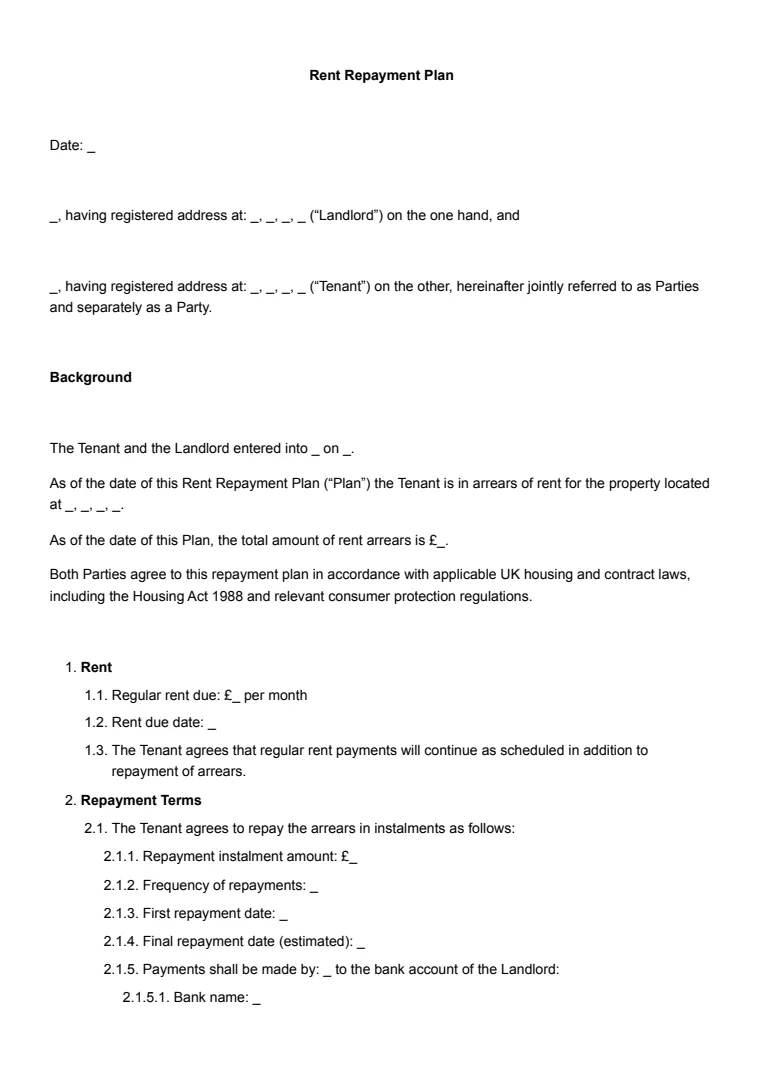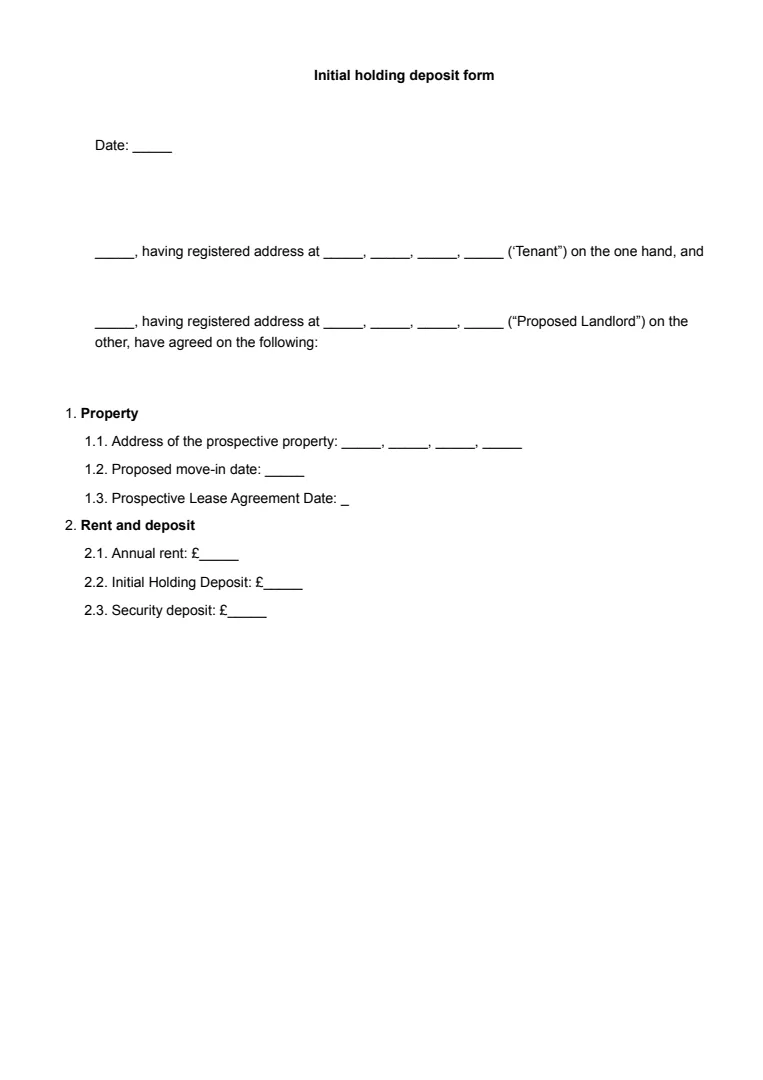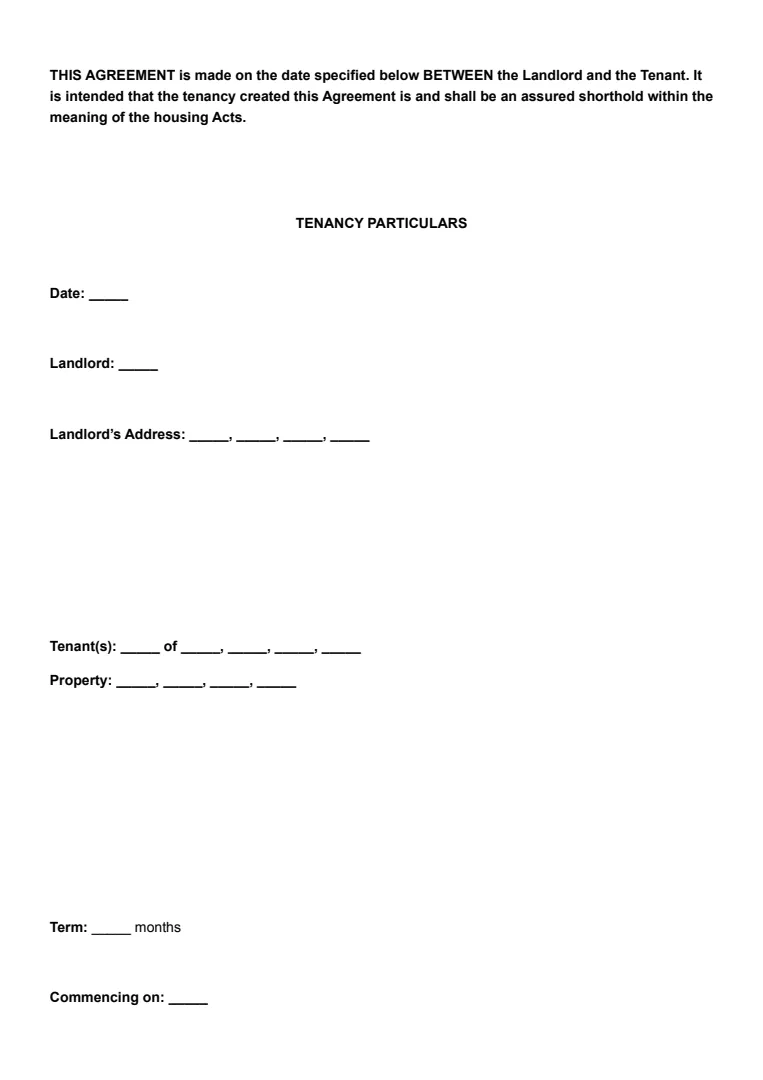What Is a Room Rental Agreement?
A room rental agreement is a crucial document if you're planning to lease out a room in your property or are a tenant looking to rent. It sets out the terms and conditions that you and your tenant or landlord agree upon.
This agreement outlines everything from rent payment details to the house rules you’d like everyone to follow.
Unlike a full lease for an entire property, this agreement is focused on renting a specific room, often within a shared living space. You, as a landlord, might still live in this shared space, like in the case of a lodger agreement.
The room rental agreement is a legally binding contract, so it provides legal protection for both parties involved. You’re ensuring that everyone understands their responsibilities and obligations from day one.
Here's what typically goes into a room rental agreement:
- Monthly Rent: What the rent is and when it needs to be paid.
- Deposit Details: Whether a security deposit is required and how it will be handled.
- Shared Spaces: Rules about communal areas like the kitchen and bathroom.
- House Rules: Any policies on guests, noise, or smoking.
In some cases, especially if the landlord doesn’t live in the property, you might come across terms like an assured shorthold tenancy or a room lease agreement. These might slightly differ but still act as a rental contract.
Overall, having a room rental agreement ensures that everyone knows where they stand and helps prevent potential disputes.
When Is a Room Rental Agreement Needed?
If you’re looking to rent out a room, it's crucial to have the right paperwork in place. A room rental agreement is essential in several scenarios.
First, if you're a landlord renting a room in your house, this agreement formalises the arrangement. It clarifies terms of stay, rent details, and rules.
If you're a tenant and plan to sublet a room, you'll need a separate room rental agreement. This document protects both you and the person moving in, covering payment and shared space use.
In shared accommodation, such as student housing or co-living spaces, a room rental agreement ensures all parties are on the same page.
Each resident may have their own individual agreement detailing responsibilities and communal area usage.
A lodger agreement might be needed if you're renting a room in a property where the landlord resides. This form of licence is important because it's more flexible than a traditional tenancy and accommodates the live-in landlord's needs.
Situations involving family members or friends might seem informal, yet having a written agreement can prevent misunderstandings. Even in cases where things seem straightforward, a room rental agreement provides legal backing.
In properties with multiple tenants, especially where rent exceeds £100,000 annually or falls below £250, it's essential to distinguish between different types of agreements. A room rental agreement ensures compliance with regulations and protects everyone involved.
How to Write a Room Rental Agreement
If you’re a landlord looking to have a room rental agreement in place, you can create a clear and comprehensive document by following these steps.
Step 1: Title the Document
Begin by titling the document as a "Room Rental Agreement." This clearly establishes the purpose and nature of the document from the outset.
Step 2: Identify the Parties Involved
Clearly state the names and details of both the landlord and the tenant. This step specifies who is legally bound by the contract and ensures transparency.
Step 3: Include Property Details
Describe the property and room being rented, including the address and any shared facilities. This section provides a clear understanding of what is included in the rental agreement.
Step 4: Outline Responsibilities and Terms
Clearly specify the responsibilities of both parties. Include details about rent payment dates, security deposits, and responsibilities for utilities and maintenance. This helps avoid confusion later.
Step 5: Consider Legal Advice
While not always mandatory, seeking legal advice can help ensure the agreement complies with local laws. This step offers additional protection for both parties.
Step 6: Address Legal Rights
Cover legal rights within the agreement, including notice periods for tenancy termination and the tenant’s right to quiet enjoyment. This section helps protect both landlord and tenant rights.
Step 7: Define the Term Length
Specify the start and end dates of the rental period. Clearly defining the term length protects both parties and avoids potential ambiguity.
Step 8: Ensure the Agreement is Written
While verbal agreements may be recognised in some cases, having a written contract provides solid proof of the terms and reduces the likelihood of misunderstandings.
Step 9: Finalise With Signatures
Ensure both the landlord and tenant sign and date the document. Keep copies for both parties to reference in the future. This step finalises the agreement and confirms mutual consent to the terms.
You can use a room rental agreement template for the UK to help guide you.














